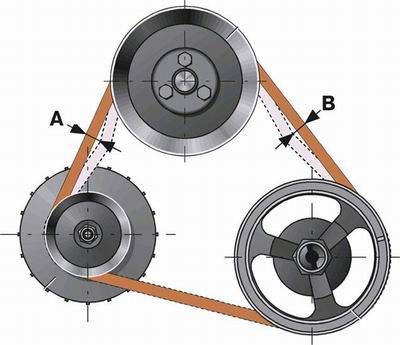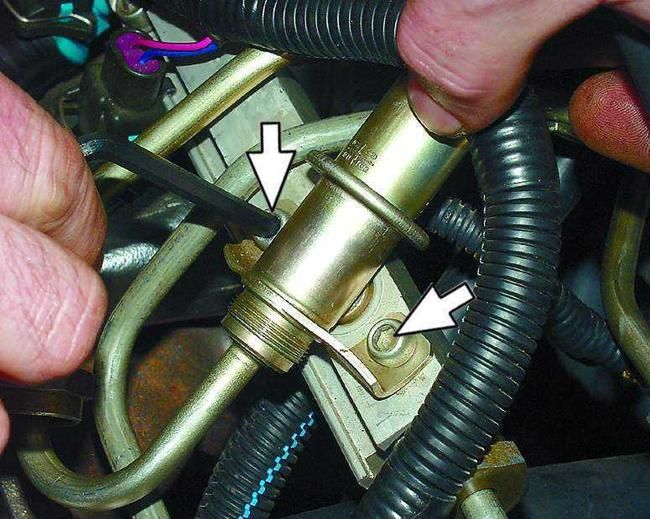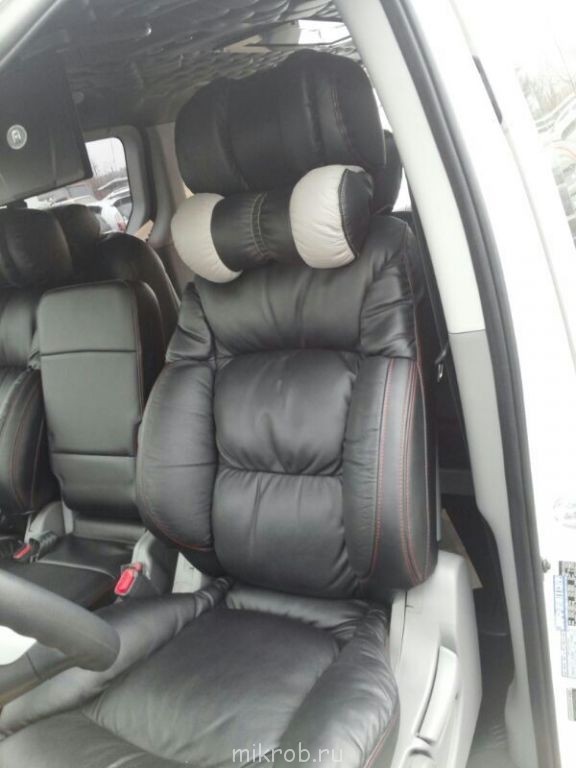
How to replace the water pump belt
Content
Vehicles must have belts to drive the water pump and accessories. The belts are designed to withstand various temperatures and be waterproof. The water pump is vital to the car's cooling system. With a faulty cooling system, the engine overheats in a matter of minutes.
There are two types of belts used to drive the engine's water pump: V-belt and V-ribbed belt. A V-belt is a unidirectional belt that can only be driven on one side, the V-shaped side. The V-belt has a mechanical adjuster that needs to be adjusted over time. A ribbed belt, also known as a multi-ribbed belt, is a single continuous belt used to drive multiple devices inside and outside the belt.
As the water pump belt wears out, it tends to freeze. This keeps the belt from sticking to the pulley and starts to slide over the pulley causing it to burn. In addition, over time, weather cracks appear on the belt, which reduces its durability and leads to belt stretching. Other common symptoms are a squealing or burning rubber smell coming from the engine.
Part 1 of 3. Checking the condition of the water pump belt
Required material
- flashlight
Step 1: Open the hood in the engine compartment. Take a flashlight and visually inspect the water pump belt for cracks or breaks.
Step 2: Press down on the belt to make sure the tensioner is working properly.. For poly V-belts, the tensioner must move when the belt is tensioned.
As for V-belts, the tensioner should not move.
Part 2 of 3: Replacing the water pump belt
Necessary materials
- Hex key set
- socket wrenches
- Switch
- flashlight
- Ratchet with metric and standard sockets
- V-ribbed belt removal tool
- Screw bit Torx
- Wheel chocks
Step 1: Park your vehicle on a level, firm surface.. Make sure the transmission is in park (for automatic transmission) or 1st gear (for manual transmission).
Step 2: Install wheel chocks around tires.. In this case, the wheel chocks wrap around the front wheels because the rear of the car will be raised.
Apply the parking brake to block the rear wheels from moving.
Step 3: Find the straps. Open the hood in the engine compartment of the car.
Locate the belts to the engine and look for the belt that goes to the water pump. For most vehicles, if they have V-belts, the inner belt usually drives the water pump. Other vehicles have V-ribbed belts to drive all accessories and pumps.
Step 4: Remove any obstacles in the way of the tape. Some belts run around the engine mounts on front wheel drive vehicles.
For rear wheel drive vehicles:
Step 5: Locate the Belt Tensioner. If it is a V-ribbed belt, remove it by using a breaker and turning the tensioner to loosen the belt.
If your vehicle has a V-belt, loosen the tensioner to loosen the belt.
Step 6: Remove the belt or belts from the pulleys..
On front wheel drive vehicles:
Step 7: Locate the Belt Tensioner. If it is a ribbed belt, remove the belt with a ribbed belt tool and turn the tensioner to loosen the belt.
If your vehicle has a V-belt, loosen the tensioner to loosen the belt.
Step 8: Remove the belt or belts from the pulleys..
For rear wheel drive vehicles:
Step 9: Install the belt on the pulleys. If it is a V-belt, simply slide it over all the pulleys and then move the tensioner to adjust the belt.
If the belt is a V-ribbed belt, put it on all but one of the pulleys. Before installation, find the simplest pulley within reach so that the belt is next to it.
Step 10: Slide the belt over the last pulley.. If you need to install a V-ribbed belt, use a breaker to loosen the tensioner and slide the belt over the last pulley.
If you need to install a V-belt, move the tensioner and tighten it. Adjust the V-belt by loosening and tightening the tensioner until the belt is loose to its width, or about 1/4 inch.
On front wheel drive vehicles:
Step 11: Install the belt on the pulleys. If it is a V-belt, put it on all the pulleys and then move the tensioner to adjust the belt.
If the belt is a V-ribbed belt, put it on all but one of the pulleys. Before installation, find the simplest pulley within reach so that the belt is next to it.
Step 12: Slide the belt over the last pulley.. If you need to install a ribbed belt, use the ribbed belt tool to loosen the tensioner and slide the belt over the last pulley.
If you need to install a V-belt, move the tensioner and tighten it. Adjust the V-belt by loosening and tightening the tensioner until the belt is loose to its width, or about 1/4 inch.
Step 13: Get all the tools used to replace the water pump belt..
Step 14: Remove the wheel chocks and set them aside..
Part 3 of 3: Test drive the car
Required material
- flashlight
Step 1: Drive the car around the block. While driving, check for unusual noises that may be caused by belt replacement.
- AttentionA: If you put on the wrong belt and it is tighter than usual, you will hear a loud chirping sound as the belt pulls on the pulley.
Step 2: Inspect the water pump belt.. When you're done with your test drive, grab a flashlight, open the hood in the engine bay and look at the water pump belt.
Make sure the belt is still on. For V-belts, check the tension to make sure it still matches the width of the belt, or about 1/4 inch.
If your vehicle continues to make noise after replacing the water pump belt, additional water pump belt diagnostics may be required or a possible belt tensioner failure. If the problem persists, contact one of AvtoTachki certified technicians.

